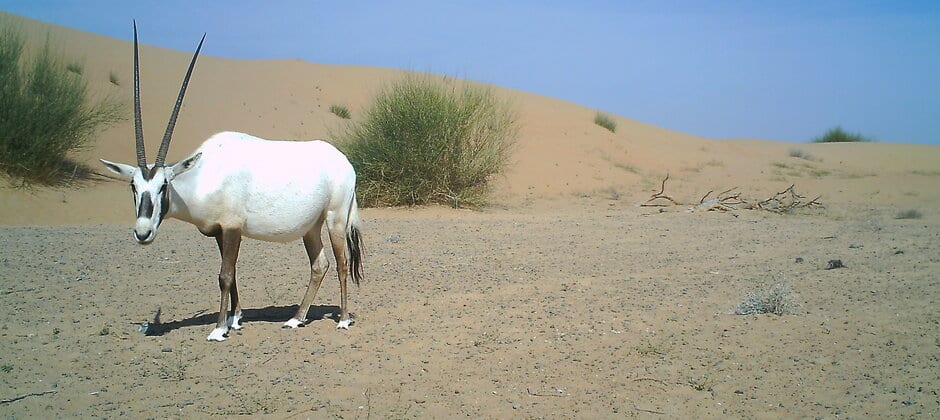Share this article
Wild Cam: Managing Arabian oryx
Arabian oryx are thriving in parts of the Middle East thanks in major part to management regimes.
The desert ungulates once roamed widely across the Middle East. But big game hunters on safaris overharvested oryx, and trappers sought them out to raise captive populations. Arabian oryx (Oryx leucoryx) were officially considered extinct in the wild in 1972, according to the International Union for Conservation of Nature—the last wild oryx was shot in Oman.
But captive populations thrived on private reserves and in zoos around the world—one large program at the Phoenix Zoo in Arizona bred them in captivity. While these programs have helped researchers learn about the biology of wild oryx over the years, they didn’t know much about their ecology.
“Not so much tracking and publishing happened in the 1970s in the Middle East, so we know very little about Arabian oryx ecology in wild nature prior to the extinction” said TWS member Sofiia Pyshnieva, a PhD student at the Czech University of Life Sciences Prague.
Enlarge
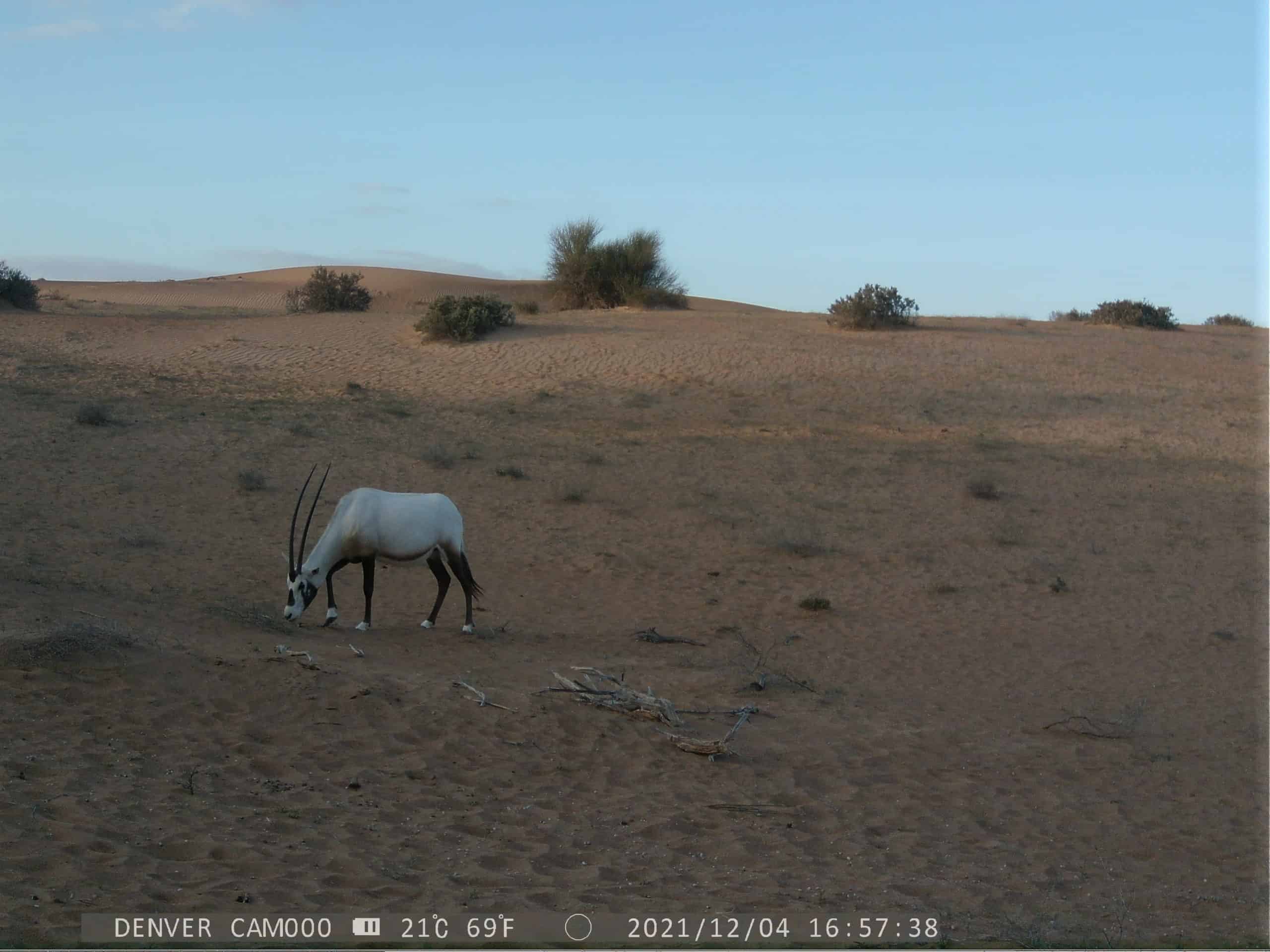
Credit: Dubai Desert Conservation Reserve
Pyshnieva wanted to understand more about oryx that live in a private, fenced reserve in the United Arab Emirates near Dubai. Wildlife managers there reintroduced 20-30 Arabian oryx to the Dubai Desert Conservation Reserve in 1999. In a research poster presented at The Wildlife Society’s virtual 2021 Annual Conference, Pyshnieva describes the behavior of oryx living in the semi-wild conditions under low and high density.
Wildlife managers began surveying the population at the reserve in 2010 using trail cameras. They installed the cameras near waterfalls, an attractive draw for oryx in the dry environment of the reserve.
However, in the wild, Arabian oryx don’t actually need to drink water. The ungulates are finely adapted to harsh weather, drawing all the moisture they need from the vegetation. Their bodies can also conserve moisture in the desert heat, and their body temperatures can rise as high as 39-40 degrees Celsius without negative health consequences. As a result, from 2018, the research team also installed cameras at natural sites where no water is found so they could compare the two ecosystems.
Enlarge
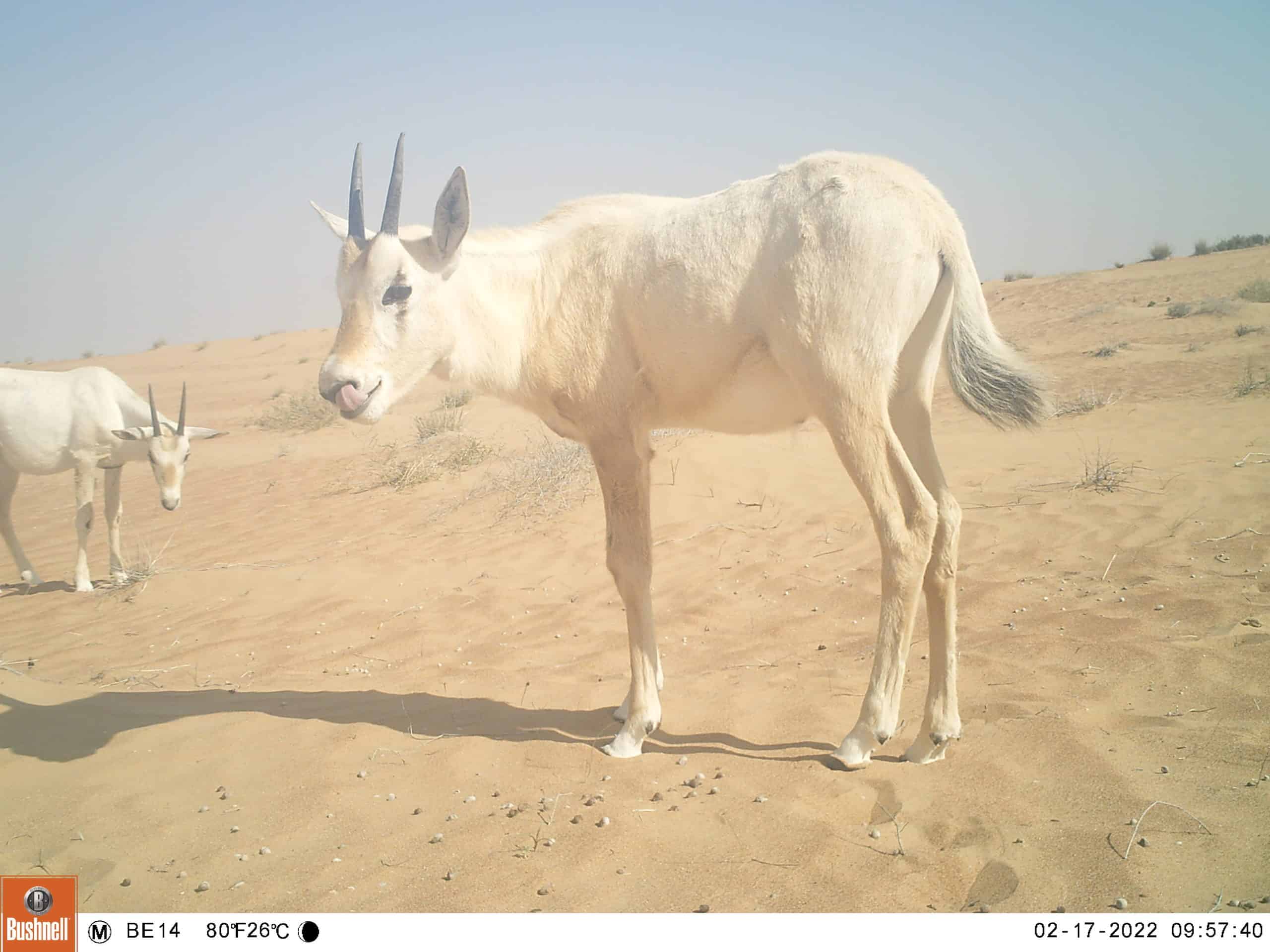
Credit: Dubai Desert Conservation Reserve
In the reserve, some of these animals gravitate toward water sources if given the opportunity, Pyshnieva said. Part of the reason they hang around waterfalls may have something to do with the lack of natural predators like Asiatic cheetahs (Acinonyx jubatus venaticus) or Arabian wolves (Canis lupus arabs) in the reserve, which might otherwise make water sources more dangerous.
But the waterfalls in the reserve may pose problems for the species. Pyshnieva said that researchers are concerned the antelopes may adapt to the relative luxury of waterfalls there. In long-term perspective, they may lose their independence from water sources, she said.
Enlarge
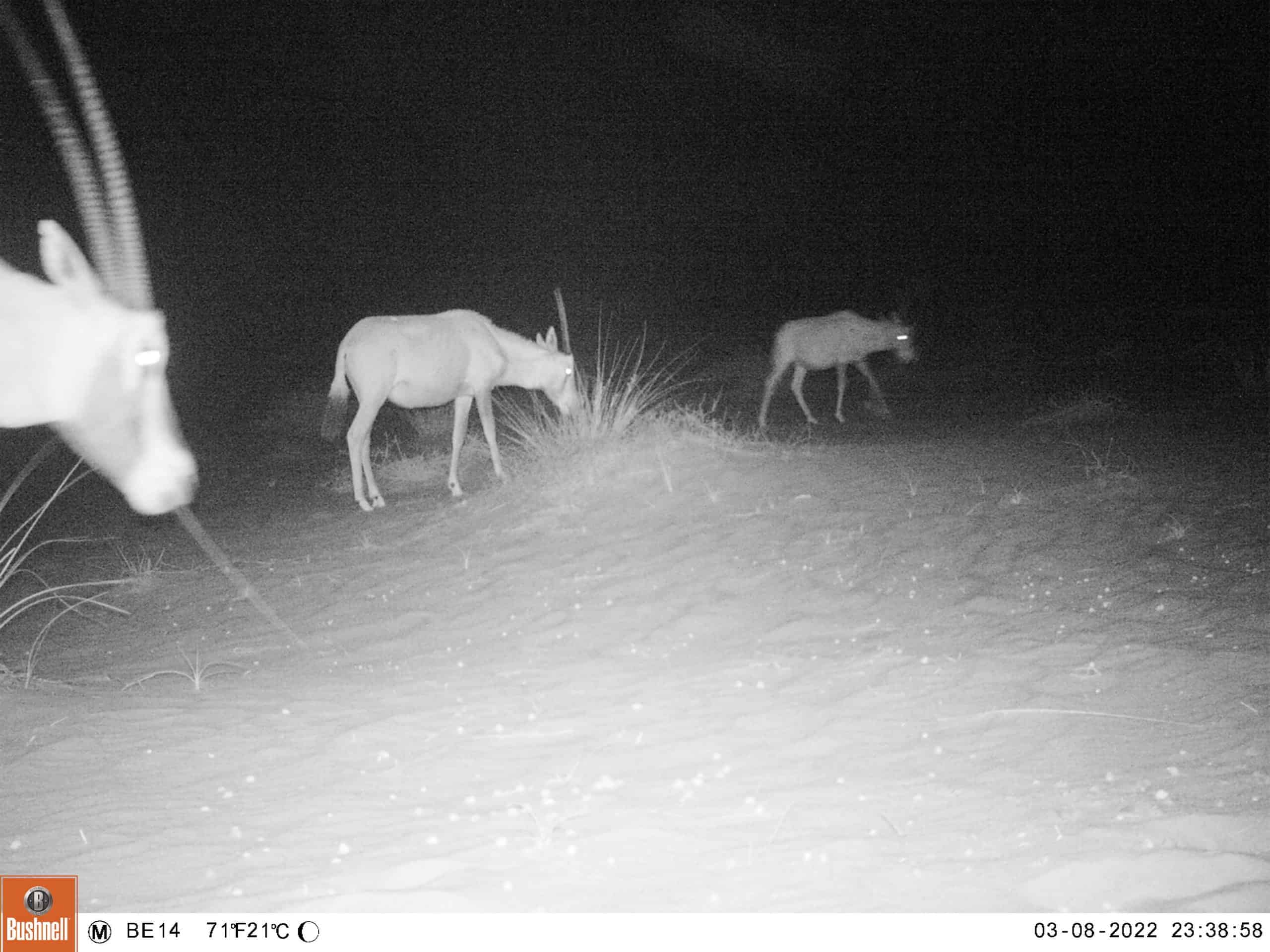
Credit: Dubai Desert Conservation Reserve
The trail cameras revealed that smaller oryx populations were more often active during the day. As numbers grew, oryx became more active all 24 hours, even at night.
Their research has also revealed that without natural predators, oryx numbers quickly increased. Moreover, herds increased from roughly 20 animals in the group up to 70. The population grew so much after initial reintroduction that the reserve staff had to remove half the population in 2019-2020 to prevent overgrazing on the fragile desert flora and competition between oryx.
“That’s not healthy, you could see that at high density, oryx were fighting much more,” Pyshnieva said.
She said that it’s difficult for oryx to persist outside of fenced reserves in the Middle East due to problems like poaching, competition for grazing with domestic camels, and habitat destruction from off-road recreation vehicles.
Enlarge
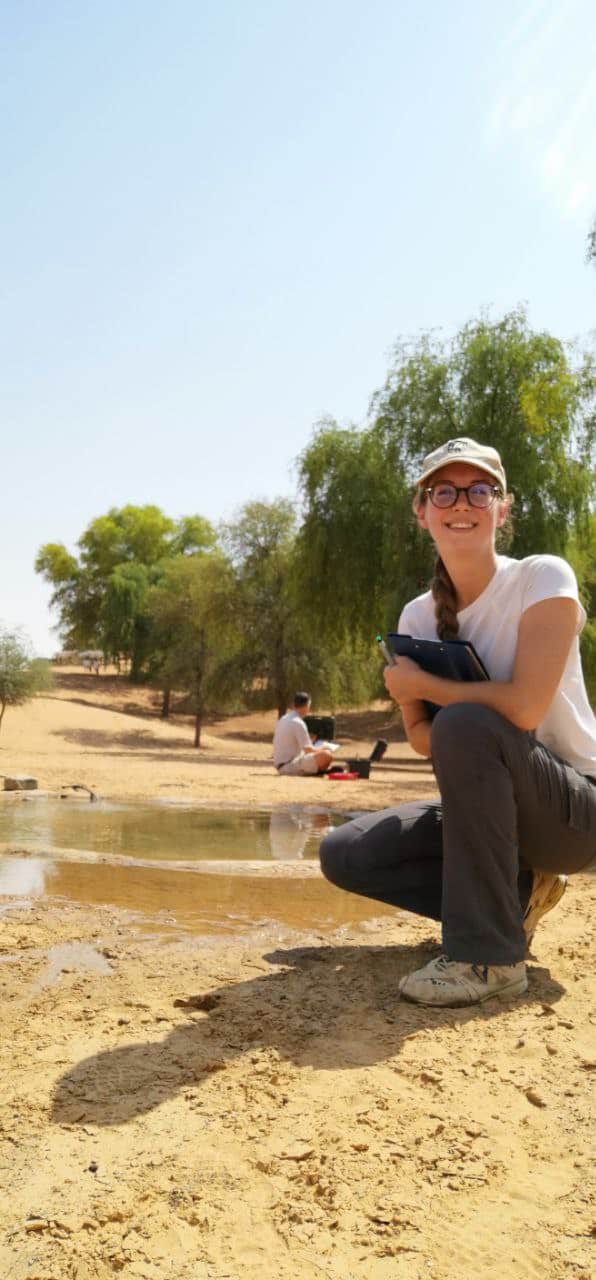
Credit: Dubai Desert Conservation Reserve
The animals can do well in fenced, managed parts of the landscape with limited ranges like the reserve in Dubai. But Pyshnieva, pictured above, said that wildlife managers should make an effort to ensure that tourists keep their distance from the animals, and to allow the oryx to live in relatively wild conditions without giving them too many unnatural luxuries like artificial shade and food.
“We have to revise how we deal with wildlife conservation. We have to preserve natural habitat and the natural behavior of animals. Otherwise, what are we preserving?” Pyshnieva said.
Enlarge
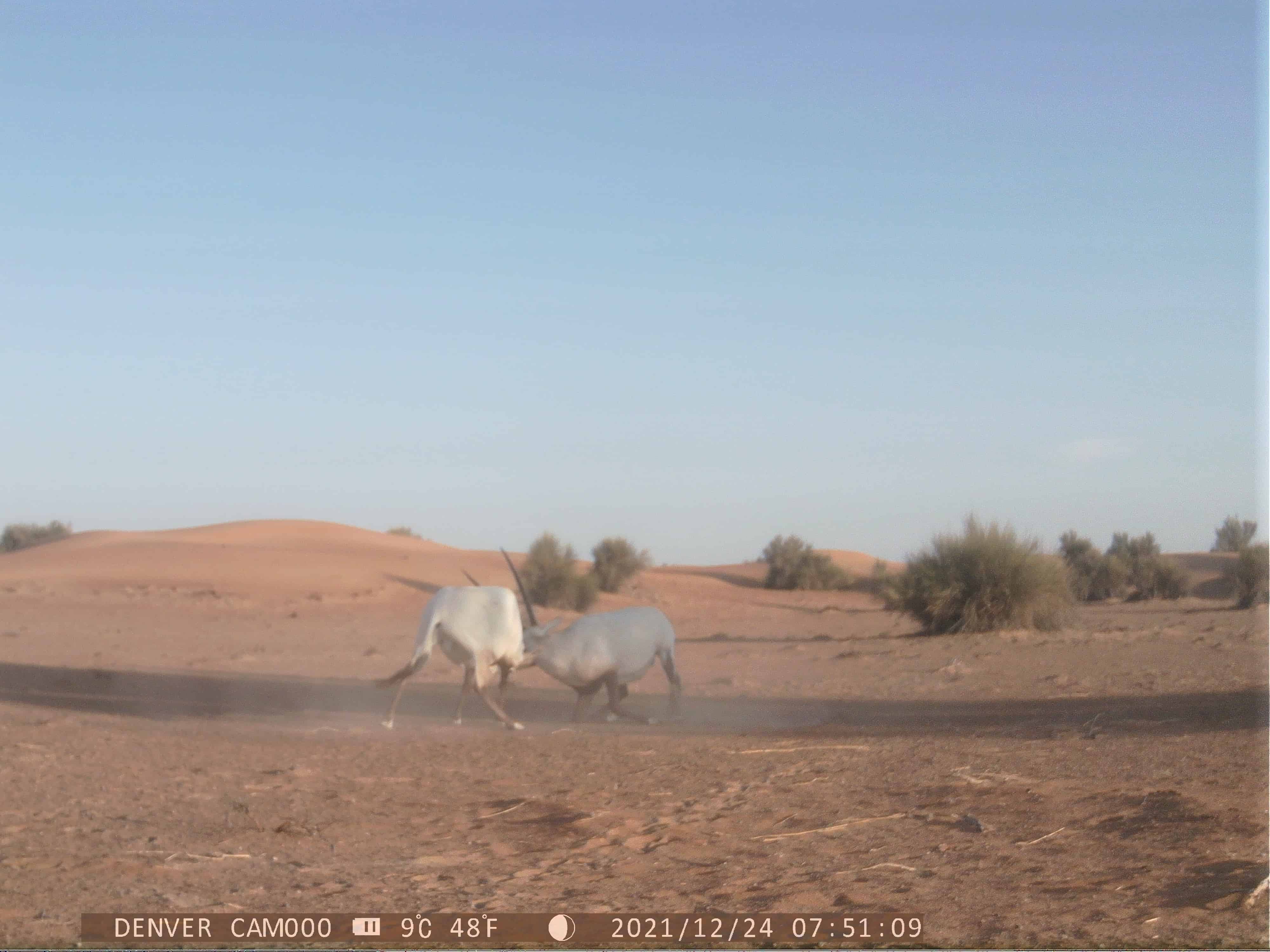
Credit: Dubai Desert Conservation Reserve
Header Image: Arabian oryx went extinct in the wild in the 1970s, but have since been reintroduced to parts of the Middle East. Credit: Dubai Desert Conservation Reserve



